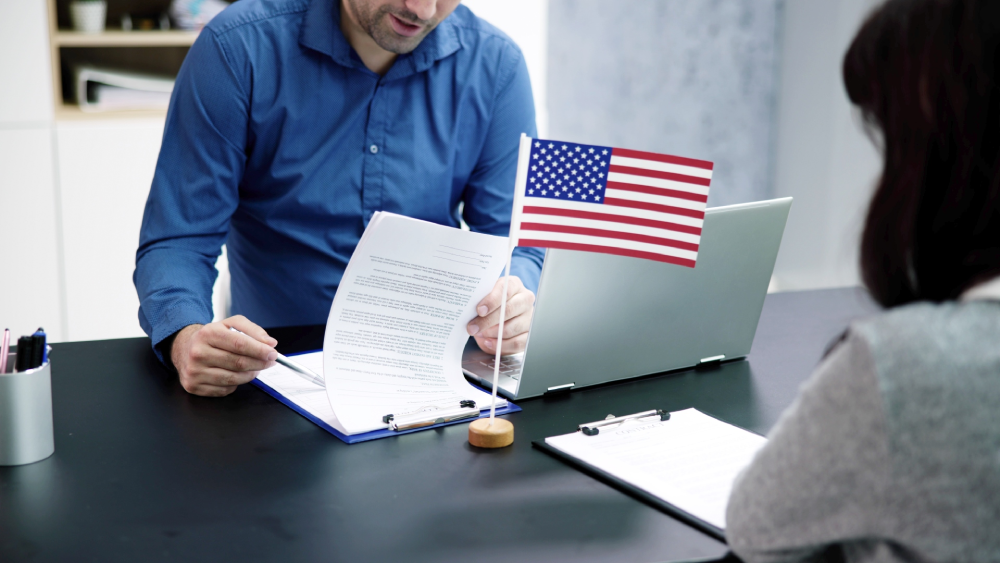How Immigrants Can Get FBI Fingerprinting for Green Cards and Visas
If you’re an immigrant applying for a U.S. green card, fiancé visa, or any type of immigration status, you will almost certainly be asked to complete an FBI background check. This process starts with FBI fingerprinting, which helps U.S. Citizenship and Immigration Services (USCIS) verify your identity and assess your criminal background.
While it may sound complex or intimidating, getting your fingerprints taken for immigration is simpler than you think, especially when you work with a professional fingerprinting provider like PDX Fingerprinting.
Let’s walk you through the entire process, what to expect, and how to avoid common mistakes that could delay your immigration case.
Why Is FBI Fingerprinting Required for Immigration?
FBI fingerprinting is a key component of the immigration background check. USCIS uses this step to:
- Confirm your identity using biometric data
- Check your criminal history in national and international databases
- Ensure you haven’t committed offenses that could disqualify you
- Prevent immigration fraud and protect national security
Whether you’re applying for a family-based visa, green card through marriage, employment-based visa, or even DACA renewal, FBI fingerprinting is part of the due diligence required to move your case forward.
When Do Immigrants Need FBI Fingerprinting?
You may be required to complete FBI fingerprinting in the following situations:
- Green card applications (adjustment of status)
- Visa interviews or consular processing
- Immigration waivers (e.g., I-601, I-212)
- Work authorization (I-765)
- Asylum applications
- Naturalization (U.S. citizenship)
- DACA or TPS renewals
- Sponsoring a family member abroad
What Are the Steps to Get Fingerprinted for Immigration?
Find an FBI-Approved Fingerprinting Provider
You must go to an agency that is authorized to collect fingerprints for FBI background checks. At PDX Fingerprinting, we are an FBI-approved provider offering both Live Scan and ink card options depending on what your immigration process requires.
We offer appointments and walk-ins, plus mobile fingerprinting if you can’t travel.
Gather the Right Documents
Before your appointment, prepare:
- A valid government-issued ID (passport, driver’s license, or green card)
- USCIS case number or instructions from your immigration lawyer
- Completed fingerprint card (if required)
- Payment for fingerprinting services
Fingerprint Capture (Live Scan or Ink)
There are two methods used:
- Live Scan (Digital) – This is the fastest and most commonly accepted method. It captures clean prints electronically and submits them directly to the FBI.
- Ink and Roll – Still accepted in some cases, particularly when submitting hard-copy fingerprint cards to USCIS or for international document requests.
We offer both methods and can guide you on which one is right for your case.
Submission and Results
Once your prints are collected, they are submitted to the FBI. You’ll receive your FBI Criminal History Summary in one of the following formats:
- Electronically (PDF download)
- Hard copy by mail (required for apostille or consular use)
Digital results typically come back in 24 to 72 hours, while mailed submissions can take up to 2–4 weeks.
What If I Need an Apostille for My FBI Report?
If you’re planning to submit your FBI report to a foreign country (for example, if your green card application is being handled overseas), you’ll likely need the report apostilled by the U.S. Department of State.
At PDX Fingerprinting, we also offer FBI report apostille services, making it simple to get everything handled in one place.
Common Mistakes That Can Delay Immigration Fingerprint Checks
- Unreadable prints due to smudges, scars, or poor technique
- Incorrect personal information (e.g., misspelled name, wrong DOB)
- Using an unauthorized fingerprinting service
- Failing to submit the correct fingerprint card or format
To avoid rejections, always choose an experienced provider like PDX Fingerprinting. If your prints are rejected, we offer free reprinting to help you get back on track.
Live Scan vs. Ink Fingerprinting for Immigration: Which Is Better?
Live Scan is recommended for most immigration use cases. It’s faster, cleaner, and has a lower rejection rate. However, ink fingerprinting may be required for special situations like consular processing or when submitting to countries that don’t accept digital files.
We’ll help you determine which method is right based on your immigration needs.
Frequently Asked Questions (FAQs)
Q: Can I use the same fingerprinting for multiple applications?
No. Each fingerprinting submission is tied to a specific purpose and agency. You’ll need to get printed again for each new immigration-related need.
Q: Is fingerprinting the same as biometrics?
Not exactly. Biometrics may also include photos and signatures. Fingerprinting is part of the biometrics process but not the whole picture.
Q: How long are FBI fingerprint results valid?
Typically 90 days to 6 months, depending on the immigration form you’re filing.
Q: Can I get fingerprinted at a police station?
Some do offer ink fingerprinting, but not all are FBI-certified. It’s safer to go to a private provider like us for immigration purposes.
Why Choose PDX Fingerprinting for Immigration Fingerprints?
We’re not just any fingerprint shop we specialize in services for immigrants, attorneys, and consular applicants. Here’s what sets us apart:
- FBI Channeler authorized
- Live Scan + ink options available
- Electronic or mailed report delivery
- Mobile services for families and law offices
- Friendly, bilingual staff ready to assist
- Fast turnaround and responsive support
We proudly serve clients in the Portland metro area and beyond.
Schedule Your Appointment Today
Don’t let fingerprinting delay your immigration timeline. Whether you’re applying for a green card, renewing your DACA, or sending documents abroad, we make it fast, professional, and stress-free.


